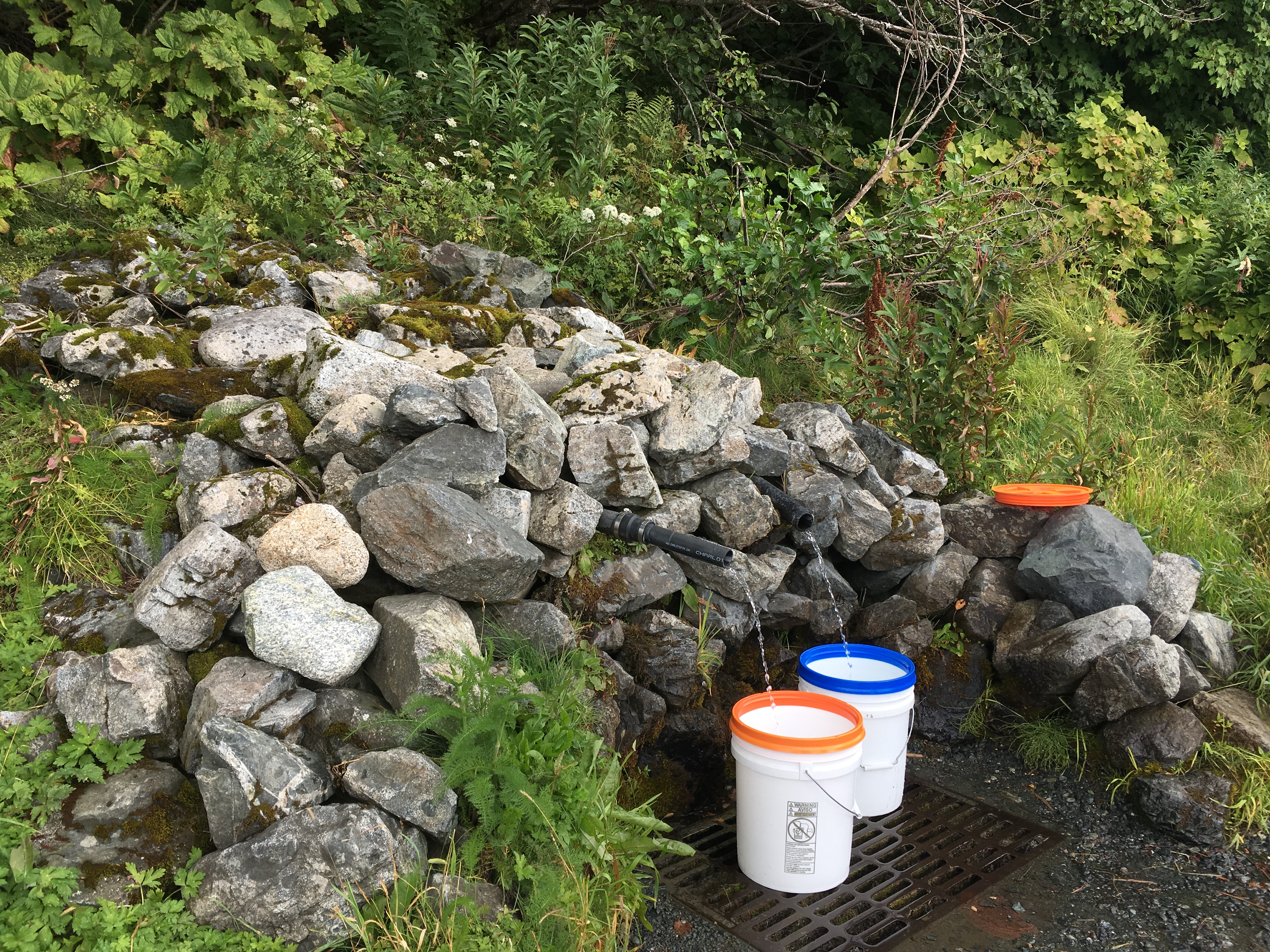
This summer, a popular water source in Haines tested positive for E. coli. The Mud Bay spring is not regulated by the borough and is not regularly tested. But it’s where a lot of people get their drinking water. And some residents are not planning to stop.
The so-called spring is on Mud Bay Road, just before Letnikof Cove. Two pipes stick out of the hillside, with rocks built up around them. It looks pretty official, but it’s not. I drove out to the spring on a summer afternoon to take a sample of the water. I got there just as a bunch of tourists were finishing up. The visitors were sipping the water out of paper cups.
I tested for arsenic, nitrates, nitrites and total coliforms.
RaeAnn Galasso is filling up several buckets of water and loading them into the back of her car. She said she’s been drinking this water for a long time.
“Sometimes for cleaning,” Galasso said. “I have a dry cabin, so it’s all this water. I’ve been using it for over 20 years. My plants do really well. I like it. It tastes great.”
But, Galasso said it is concerning that it’s not tested. That concerned me too. I sent samples to the Juneau-based water testing company Admiralty Environmental.
The lab results show no significant levels of arsenic, nitrates or nitrites. But they did find E. coli. The test doesn’t show what strain of the bacteria is present. Cindy Christian is a drinking water specialist at the Alaska Department of Environmental Conservation. She said E. coli is not always bad for you. There are strains that are harmful but some that are benign.
“But they’re all associated with fecal matter that comes from mammals,” Christian said. “And some other organisms. Birds and things can carry E. coli also. In drinking water, they are not supposed to be there at all.”
Christian said E. coli is an indicator bacteria. It could mean other nasty stuff is in the water, too. Like salmonella or giardia.
With waterborne diseases like these, Christian said the symptoms are usually gastrointestinal. You might have diarrhea, abdominal cramping or lose your appetite. Some strains can cause more severe health problems.
Let’s back up a bit to how we came to test the water. We asked listeners to send up things they’ve always wondered about this area. One person sent a question asking: ‘Is the Mud Bay Spring really a spring? Or should it be called the Mud Bay runoff?’ I grabbed a friend and hiked in to the woods, trying to trace the pipes and creeks to the source.
But we couldn’t find it. So, I dug back further into the water’s history.
Haines resident Randy McDonald said he’s the one that put in the pipes, and built up the rock around them. He said he installed the pipes in the mid-1980s. McDonald said people were already getting water at the spot, but he made improvements to increase the water flow.
Someone did take measures to keep animals away from the water. But, the fencing has fallen over since then.
Christian, with the DEC, said Haines isn’t alone. She’s come across similar unregulated drinking water sources around the state. She said in terms of monitoring water quality, it doesn’t really matter whether it’s a spring or runoff.
“Springs are usually treated as surface water also, so even if it were a natural spring, it would still – may not be suitable for drinking water unless it’s treated,” Christian said.
Christian said the safest bet for people who want to keep drinking the water is to boil it.
But many residents who have depended on the water source for years aren’t scared away by the E. coli. Krystal Norberg lives out Mud Bay and is even more reliant on the water because she has a dry cabin.
“I’ve drank it for 10 years,” Norberg said. “I’ve never gotten sick. Nor have I ever known anyone to have gotten sick.”
After we reported on the presence of E. coli in the water, the Haines Borough started looking in to testing it. At a recent meeting, the assembly voted unanimously to conduct a test.
But, Christian said no matter how many tests you do, one thing isn’t likely to change. She said because the so-called spring is untreated surface water exposed to elements and wildlife, it’s always likely to have bacteria like E. coli.




